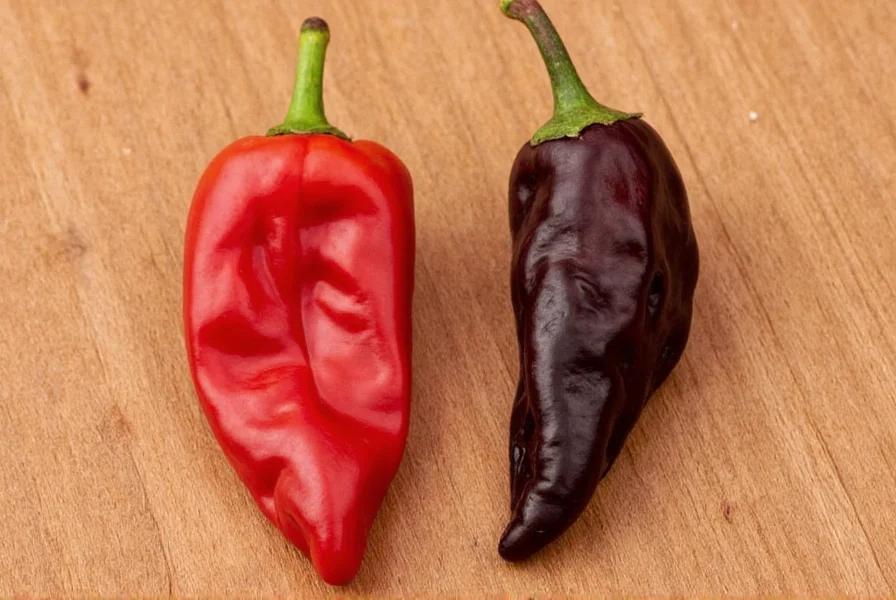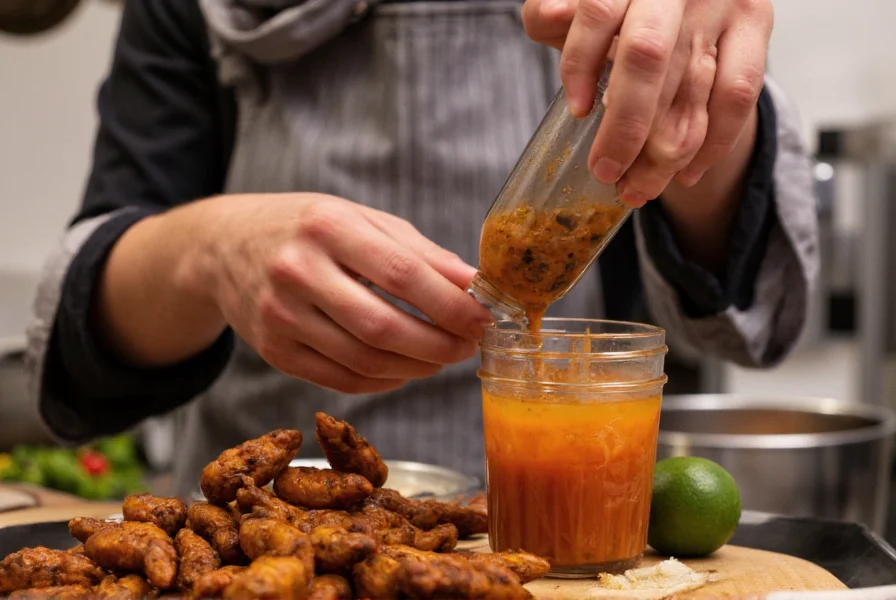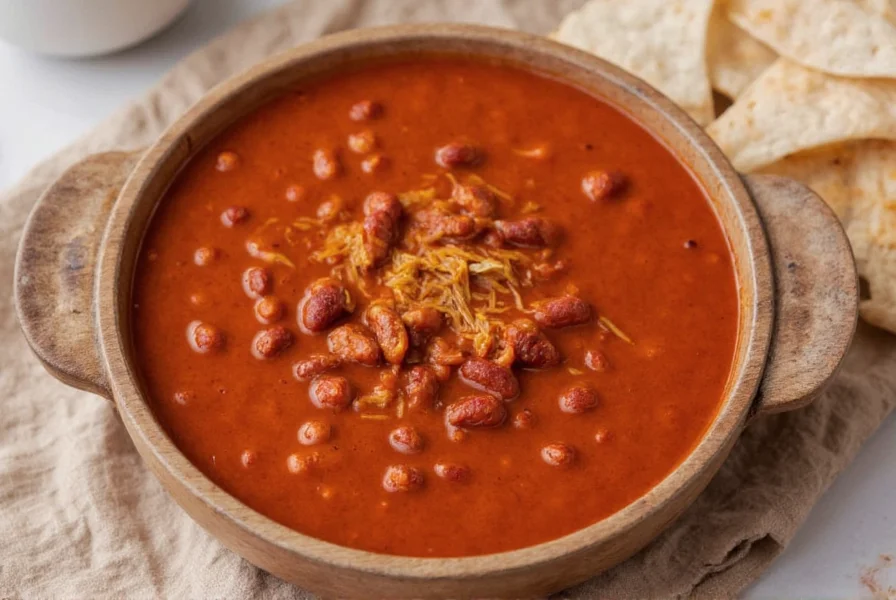Understanding what chili is chipotle requires exploring both its culinary transformation and cultural origins. The term “chipotle” comes from the Náhuatl language (spoken by the Aztecs), combining “chil” (chili pepper) and “potle” (smoked). This etymology reveals the essential truth: chipotle refers specifically to smoked and dried jalapeño peppers, not a separate chili species.
The Transformation Process: From Jalapeño to Chipotle
Farmers harvest fully mature red jalapeños—not the green, unripe versions commonly found fresh—and subject them to a slow smoking process over wood fires, typically using oak or hickory. This smoking can last several days, during which the peppers lose moisture while absorbing complex smoky flavors. The result is a wrinkled, dark brown to mahogany-colored pepper with concentrated heat and distinctive flavor notes.
| Characteristic | Raw Red Jalapeño | Chipotle Pepper |
|---|---|---|
| Heat Level (Scoville) | 2,500–8,000 | 2,500–8,000 (concentrated) |
| Flavor Profile | Grassy, bright, vegetal | Smoky, earthy, slightly sweet |
| Moisture Content | High (fresh) | Low (dried) |
| Common Forms | Fresh peppers | Dried whole, in adobo sauce, powder |
Chipotle Varieties: Morita vs. Meco
Not all chipotles are identical. Two primary varieties exist in the marketplace:
- Chipotle Morita: The more common variety, smoked for a shorter duration. These peppers retain a slightly chewier texture and reddish-purple hue. They're often sold packed in adobo sauce and offer a fruitier, less intense smokiness.
- Chipotle Meco (or Tapatío): Smoked longer, resulting in a darker, more brittle pepper with deeper smoky notes. Meco peppers have a more complex, almost leathery flavor profile and are typically sold whole without adobo sauce.

Why Chipotle Isn't Just “Spicy Smoked Jalapeño”
While technically accurate to say chipotle is a smoked jalapeño, this oversimplification misses crucial culinary context. The smoking process fundamentally transforms the pepper's chemical composition. As jalapeños ripen to red, their capsaicin (heat compound) concentration increases slightly, and smoking further concentrates flavors while adding new aromatic compounds through the Maillard reaction.
When exploring what chili is chipotle, it's essential to recognize that chipotle represents a specific preparation method rather than a unique botanical variety. This distinction explains why you won't find “chipotle plants”—farmers grow jalapeño plants and then process the ripe peppers to create chipotles.
Culinary Applications of Chipotle Peppers
Chefs value chipotles for their ability to add depth beyond mere heat. Common uses include:
- In adobo sauce: Blended chipotles in tomato-based adobo create the versatile canned product found in supermarkets
- Mojo preparation: Rehydrated chipotles form the base for marinades and sauces
- Smoke infusion: Chipotle powder adds instant smokiness to rubs and spice blends
- Complex heat: Unlike fresh chilies, chipotles provide layered heat that develops gradually
Substitutes When Chipotle Isn't Available
If you're wondering what chili is chipotle and need alternatives, consider these options based on your recipe's requirements:
- For smoky flavor: Smoked paprika (use 1:1 ratio for powder)
- For heat and tang: Guajillo peppers with a dash of liquid smoke
- For adobo sauce texture: Ancho chilies blended with vinegar and spices
- For whole pepper substitution: Pasilla de Oaxaca with smoked salt
Storage and Handling Tips
Proper storage maintains chipotle quality:
- Dried chipotles: Store in airtight containers away from light (up to 1 year)
- Canned chipotles in adobo: Refrigerate after opening (up to 6 months)
- Chipotle powder: Keep in cool, dark place (6–8 months for peak flavor)
When working with dried chipotles, rehydrate them by soaking in hot water for 15–20 minutes before use. For intense recipes, remove seeds and membranes to reduce heat while retaining smoky flavor.
Common Misconceptions About Chipotle Peppers
Several myths persist about what chili is chipotle:
- Myth: Chipotles are a different species than jalapeños
Fact: They're identical botanically—only the processing differs - Myth: All chipotles are extremely hot
Fact: While jalapeños range 2,500–8,000 SHU, the smoking process doesn't increase heat—it concentrates existing capsaicin - Myth: “Chipotle” refers to the adobo sauce
Fact: Adobo is a separate preparation—chipotles can exist without it

FAQ: Frequently Asked Questions About Chipotle Peppers
Are chipotle peppers just smoked jalapeños?
Yes, chipotle peppers are specifically smoke-dried ripe red jalapeños. The smoking process transforms the fresh peppers into the distinctive chipotle form with concentrated flavor and smokiness.
What's the difference between chipotle and jalapeño?
Jalapeño refers to the fresh green or red pepper, while chipotle specifically denotes the smoke-dried version of ripe red jalapeños. Chipotles have deeper, smokier flavor and more concentrated heat than fresh jalapeños.
Why are chipotle peppers called chipotle?
The term “chipotle” comes from the Náhuatl language (spoken by the Aztecs), combining “chil” (chili pepper) and “potle” (smoked), literally meaning “smoked chili.” This reflects the traditional preparation method.
What does chipotle taste like compared to regular jalapeño?
Chipotle has a deep smoky, earthy flavor with subtle sweetness and tobacco notes, while fresh jalapeño offers bright, grassy, vegetal notes. The heat profile differs too—chipotle delivers a slower-building, more complex heat compared to jalapeño's immediate sharpness.
Can I substitute chipotle powder for fresh chipotle peppers?
Yes, but adjust quantities carefully. Generally, 1 teaspoon chipotle powder equals 1-2 whole rehydrated chipotle peppers. Remember that powder lacks the textural element of whole peppers and may have slightly different flavor intensity.











 浙公网安备
33010002000092号
浙公网安备
33010002000092号 浙B2-20120091-4
浙B2-20120091-4